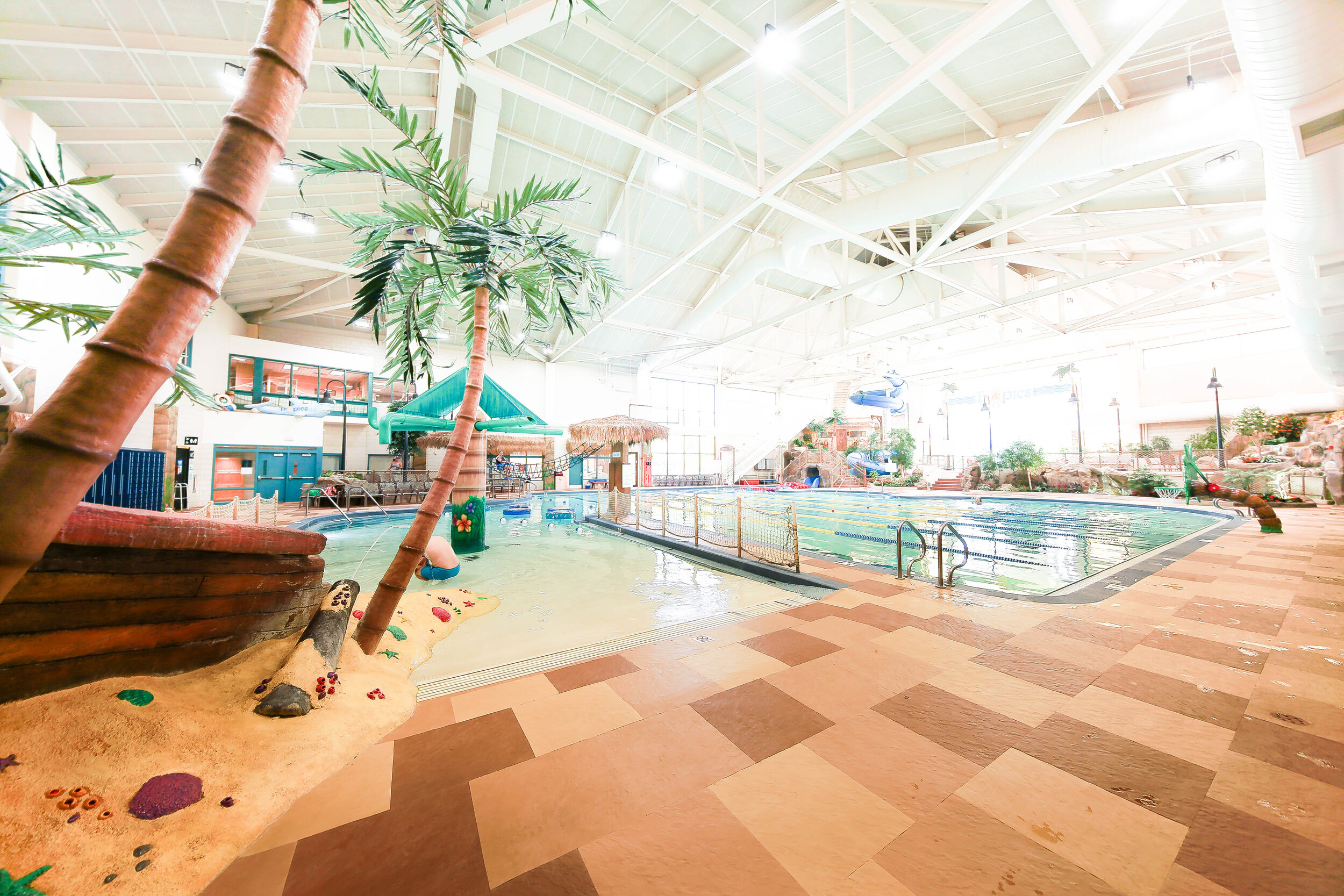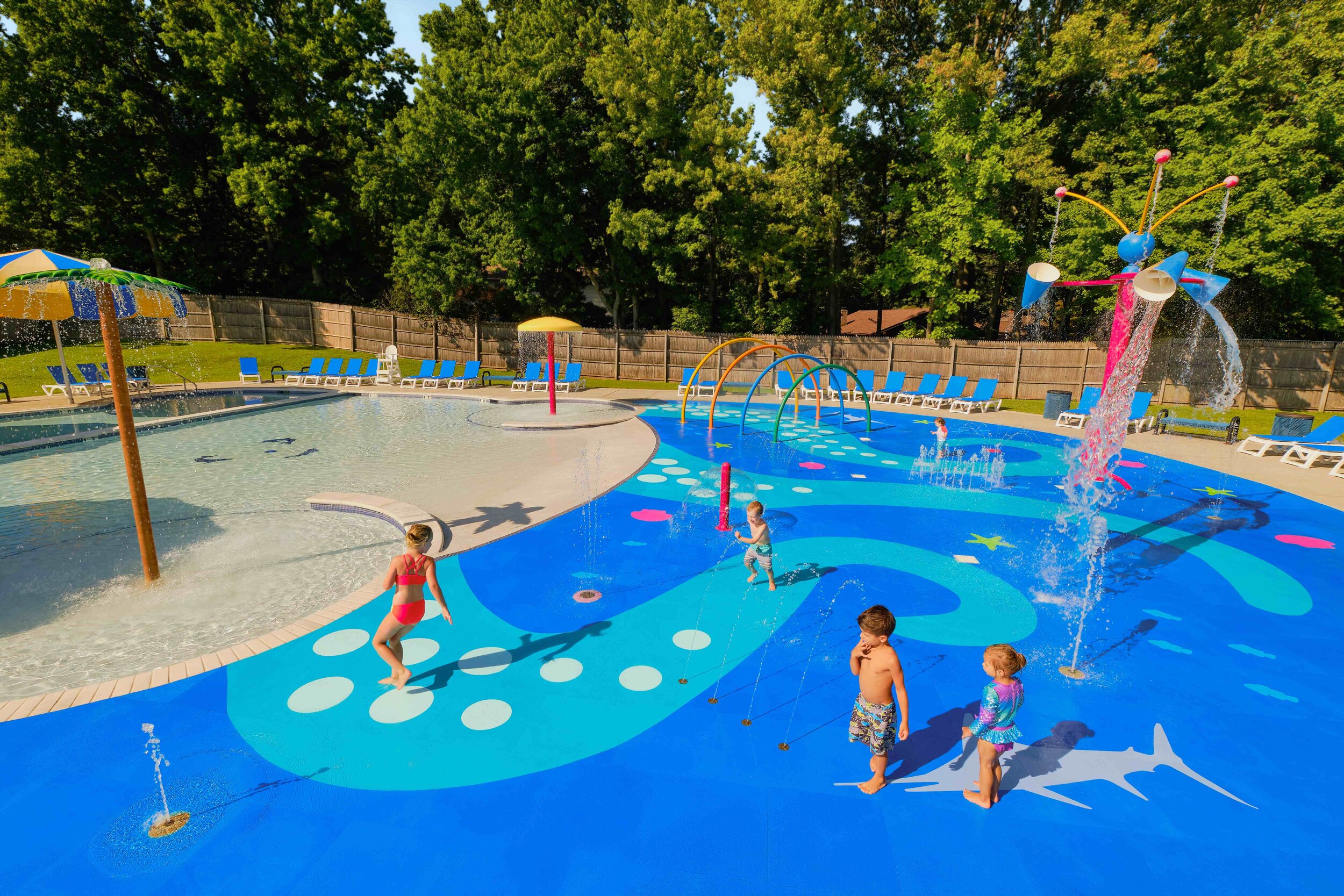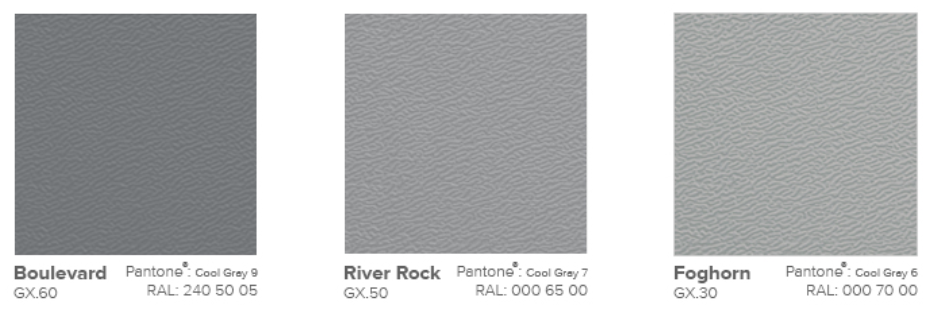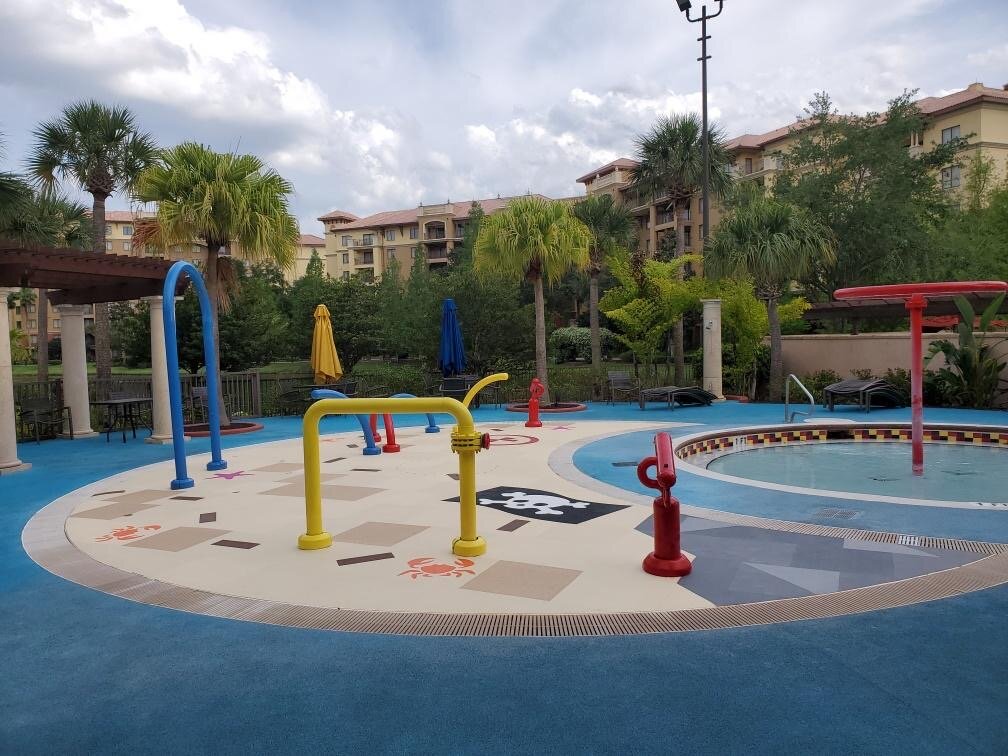Located on the Gold Coast in Australia is ULTIQA Beach Haven on Broadbeach Resort. A recent refurbishment of this unique outdoor swimming pool included Life Floor to improve comfort and underfoot safety on the pool island deck, stair step, and wading pool floor at this popular family resort.
“Guests are loving the Life Floor tiles especially the safe texture for the little ones in the wading section. The colourful design of the Life Floor tiles on the pool island is inviting and provides a safe area for children to enjoy.”
Featuring a wavy pattern in Life Floor’s High Tide Color Theme, this slip-resistant safety surfacing enables guests to run, jump, and play without fear of slipping and falling on the island platform. One of the top concerns for many facilities is related to slip-and-fall injuries and increased liability, so choosing Life Floor is not only a beautiful choice, but also a decision that can help mitigate risk. Due to Life Floor’s NSF/ANSI/CAN Standard 50 Certification, facility operators can be assured that Life Floor provides an industry-leading safety surfacing option to improve guest experience. Through feedback from families, this resort has experienced a positive increase in overall user happiness that contributes to an immersive and inclusive experience for all ages.
Thank you to ULTIQA Hotels and Resorts for the opportunity to make your pool deck safer and more beautiful with Life Floor. We look forward to continuing to serve you and your guests.










































